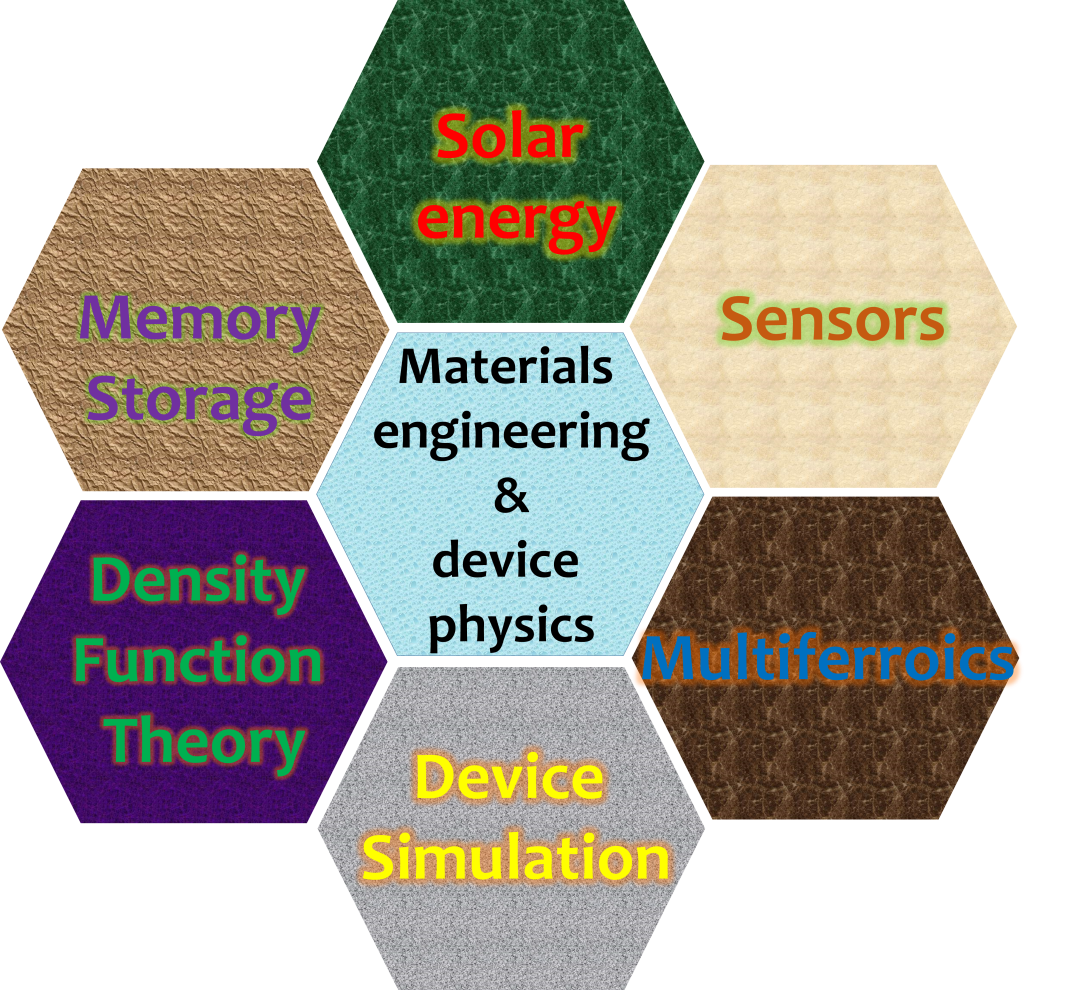Anything under the universe fascinates me and thus, I like to explore whatever comes in front of me, posing challenges rather than limiting to certain specific domain. The charm of exploring beyond universe also attracts strongly, but so for ……………….
However, most of my research is around understanding the physics of complex materials including correlated electron systems and engineering their properties for the desired applications such as alternative energy generation and storage, multistate memories, spintronic devices, and light emitting devices, and strategic applications such as stealth and sensors.

The storage of energy is equally important to meet or at least mitigate the off-Sun hour energy requirements. The group is focusing on developing low and high temperature phase change materials (PCMs) for efficient thermal energy storage. We devised method to tailor their thermal conductivity for fast charging/discharging of PCMs. We also developed low cost methods and materials for high energy density electrical energy storage systems i.e. Li ion batteries and also beyond Li ion batteries i.e. Na and other metal ion batteries. We demonstrated the impact of Jahn-Teller effect on Li2TMSiO4 (TM = Transition Metal) and thus could resolve the capacity fading in these materials. The development on lithium ion batteries impacted the life of every human being on the earth and that’s why resulted in Chemistry Nobel Prize in 2019 to Professor John B. Goodenough (The University of Texas at Austin, USA), Professor M. Stanley Whittingham (Binghamton University, State University of New York, USA), and Professor Akira Yoshino (Asahi Kasei Corporation, Tokyo, Japan & Meijo University, Nagoya, Japan) for their contribution in Li ion batteries.
The storage of energy is equally important to meet or at least mitigate the off-Sun hour energy requirements. The group is focusing on developing low and high temperature phase change materials (PCMs) for efficient thermal energy storage. We devised method to tailor their thermal conductivity for fast charging/discharging of PCMs. We also developed low cost methods and materials for high energy density electrical energy storage systems i.e. Li ion batteries and also beyond Li ion batteries i.e. Na and other metal ion batteries. We demonstrated the impact of Jahn-Teller effect on Li2TMSiO4 (TM = Transition Metal) and thus could resolve the capacity fading in these materials. The development on lithium ion batteries impacted the life of every human being on the earth and that’s why resulted in Chemistry Nobel Prize in 2019 to Professor John B. Goodenough (The University of Texas at Austin, USA), Professor M. Stanley Whittingham (Binghamton University, State University of New York, USA), and Professor Akira Yoshino (Asahi Kasei Corporation, Tokyo, Japan & Meijo University, Nagoya, Japan) for their contribution in Li ion batteries.
We also try to understand the impact of external stimuli such as strain and both electric/magnetic field to tailor the materials’ properties and their impact on various applications such as band gap engineering, electronic transitions, sensors, thermoelectric, and hydrogen storage/evolution reaction. In addition to external stimuli, the dopants are used tailor the material properties to realize enhanced sensing, hydrogen storage, and even other applications. We demonstrated that very high sensitivity of NH3 and NOx can be achieved ultrafast recovery in WSSe Janus monolayer. These fundamental understanding led to realize the highly sensitive and fast sensors. We also explore electronic transitions in 2D nitride, TMDC and Oxide monolayers using strain and defect engineering.
I am also working on multifunctional materials including multiferroics, magnetic, and ferroelectric materials for potential strategic applications. We are exploring complex oxide electron correlated systems and dilute magnetic semiconductors for various applications. The magnetic and ferroelectrics are important class of materials and have shown their potential for various technological applications in modern day electronics. The presence of both in a single phase is also difficult and rare materials exhibit the presence of both ferroic ordering in a single phase. Thus, it provides an opportunity for both theoretical and experimental physicists to design and develop such materials. We provided the design criteria for fabricating such materials where more than one ferroic orderings can be realized. Further, we demonstrated the application of such materials in strategic applications such as stealth for wide microwave frequency range. Additionally we also demonstrated the proof of concept for multistate memories in these functional materials.
We are also venturing into extraterrestrial materials to understand the origin of universe/life and were the first to report on the physical properties of CM2 like Mukundpura meteorite in 2018. We further found the spin glass behavior in this system and proposed that Mossbauer spectroscopy can be used a non-destructive technique to find out the characteristics of meteorites.
Thus, we enjoy exploring novel functional materials both theoretically and experimentally not only to understand their functional properties with their microscopic origin but also utilize them for suitable applications.
